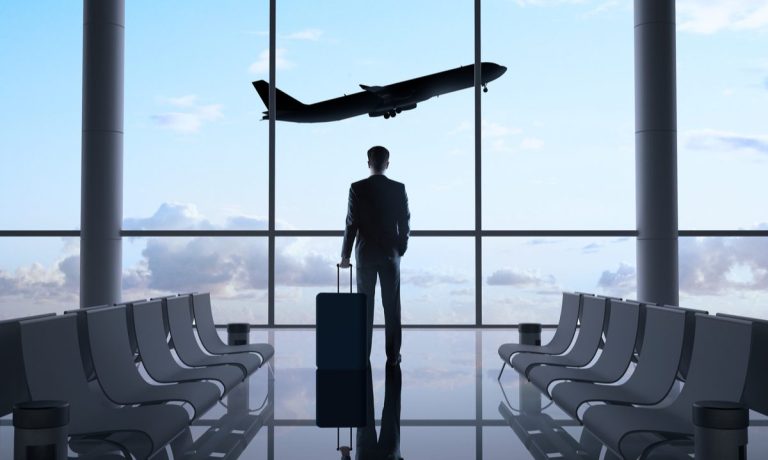Airlines Are Pushing Back To Profitability, But B2B Travel’s Recovery Is Far From Certain

After a solid year and a half of continually mounting losses, the major airlines reporting earnings this week are finally showing signs of a profitable turnaround.
Delta Air Lines, American Airlines and Southwest Airlines all reported positive profits when their earnings hit the wires, with United Airlines being the only one of the four still marking losses in its results for Q2. And even United’s losses were drastically narrowed, and the airline is anticipating a return to profitability during the back end of 2021.
Atlanta-based Delta Air Lines snapped its five-quarter losing streak, posting profits of $652 million, thanks to federal coronavirus aid and domestic leisure booking dramatically increasing during the second quarter of the year. The airline further noted it expects to be profitable for the second half of the year without the benefit of government aid.
American Airlines had a similar story to report: a five-quarter losing streak broken with net income of $19 million for the quarter. Revenue for the three months ended June 30 came in at $7.48 billion, up from just $1.6 billion a year earlier and ahead of analyst expectations. American’s profitability comes with a slight asterisk: accounting for one-time expenditures, American had a loss of $1.1 billion or $1.69 a share.
Southwest, on the other hand, had no such Q2 asterisk, and the Dallas-based airline’s sales rose nearly 300 percent from a year earlier to $4 billion — a 32 percent decline from $5.9 billion in Q2 2019, but a significant improvement form Q2 2020 when the airline faced $915 million in net losses, versus the $348 million in net income reported in Q2 2021.
A similar message was heard from all of the major airline CEOs going into their earnings reports, touting surging consumer desire to travel by air as a sign that the industry, while not fully recovered, is on its way back from what has been a long and difficult time period. United CEO Scott Kirby was particularly buoyant in his optimism, noting in his call with investors post-release they aren’t just seeing the light at the end of the tunnel, but preparing to exit the tunnel entirely, even in the face of the rapidly spreading Delta valiant of COVID-19.
“And so while we expect case counts to rise, given the vaccination rates, they will still remain well below the peak, and hospitalizations and deaths will not rise nearly as much,” he said. “That leads to the logical outcome that the reopening continues on track.”
Not Entirely Blue Skies Ahead
On track, perhaps, but not entirely smooth sailing for all parties involved. Given the cutbacks to both route offerings and staffing during 2020 as an outgrowth of the pandemic, Delta, Southwest and American all reported pressures to rebuild and re-staff quickly.
All three airlines confirmed during their comments to analysts that hiring pushes are currently underway and that the hope is to be fully ready to go by the end of Q3 2021. United was, again, the outlier in this regard, noting it hasn’t faced the massive staffing issues its competitors have, as it had been “ramping up our schedule for the last three months,” in anticipation of the surging demand now on display across the industry.
A universally acknowledged issue is the unevenness in return for demand between domestic and international travel. While all four airlines reported that domestic travel has recovered to near pre-pandemic levels, uneven distribution in vaccines around the world and the rise of more aggressive coronavirus variants have left international demand still highly stalled and expected to recover more slowly. Delta CEO Ed Bastian noted in his comments to analysts that the airline expects international demand will return, likely within this calendar year, saying that “we see clear signs of business in international demand recovery heading into the fall.”
The Business Travel Demand Question Mark
Also an area of reticence about return is the corporate travel segment, which got notably less attention from the airlines as they reported their earnings. United addressed the topic most directly in a call with analysts, evincing a largely positive attitude despite confirming that business travel still 60 percent down from what it was pre-pandemic.
“We expect business demand to improve by the end of the third quarter to be down about 40 percent to 45 percent versus 2019,” said United’s Kirby.
Delta touched on the topic, but was a bit more vague, saying it expects to hold the leading position in this segment of the market, despite increasing coming competition from United, which announced its intentions to double down on the area last month. Bastian also noted domestic corporate volumes have recovered about 40 percent in the month of June, doubling from the 20 percent recovery observable in March.
It seems worth asking, however, given the strength and speed with which leisure travel has returned, whether airlines remain a bit too optimistic about the more lucrative business travel segment’s return. As PYMNTS has previously reported, working via Zoom (or Google Meets or one of the many video conferencing options out there) is no longer merely an acceptable fill-in for a large number of corporate players, but an actual improvement for businesses. That doesn’t mean business travel is dead forever, Ingo Money CEO Drew Edwards noted in an interview with Karen Webster earlier this year — but it just might indicate that it’s going to change quite a lot, and airlines are going to have to adjust to that new reality.
“I still believe people want to get out, but I might not go to a 20,000-person conference as willingly as I once did,” he said. “But I don’t think the days of going to New York and having dinner with six people in a private dining room are dead forever.”